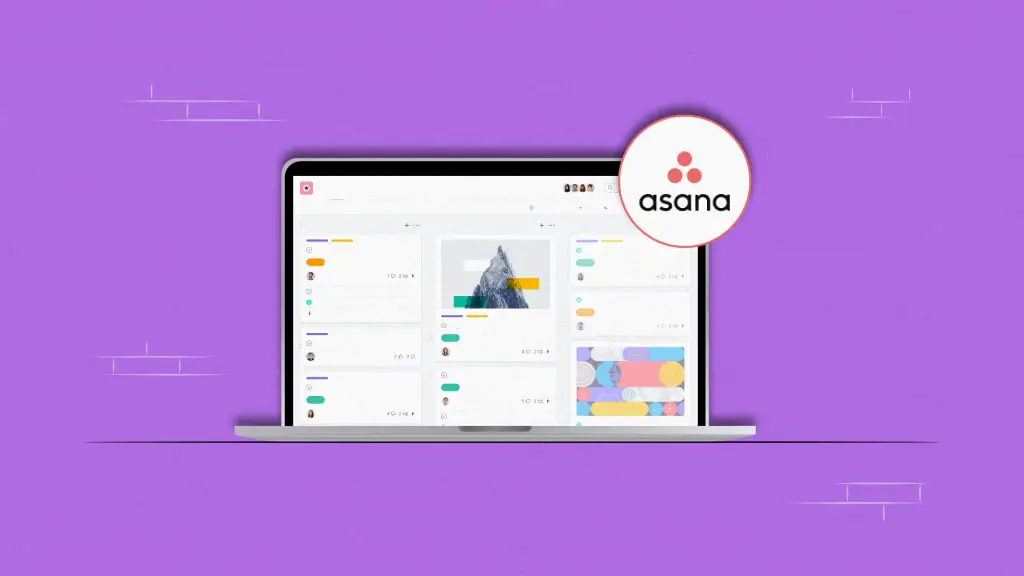Unlocking Productivity: The Curious Case of Task Management Tools
Boosting Productivity: The Unsung Power of Task Management Tools
Understanding the Productivity Puzzle: Why Task Management Matters
In today's fast-paced world, effective time management is no longer a luxury; it's a necessity. The constant barrage of emails, meetings, and deadlines can easily lead to feeling overwhelmed and unproductive. This is where task management tools step in as unsung heroes, offering structure, clarity, and control over your workflow. They are not just about ticking off boxes; they're about strategically planning, executing, and tracking your progress toward achieving larger goals. Without a system, tasks can fall through the cracks, deadlines are missed, and projects stall. Task management empowers you to take charge and make every minute count. The secret is to find the system that best suits your working style and preferences.
Imagine trying to build a house without a blueprint. Chaos would ensue! Similarly, navigating a complex workload without a well-defined task management system can lead to disarray and inefficiency. Task management is not just about listing tasks; it's about strategically organizing them, prioritizing them, and tracking your progress in order to maximize efficiency and achieve your goals smoothly and on time. The ability to visualize your workflow, break down large projects into smaller, manageable steps, and track your progress is pivotal in ensuring consistent productivity.
Top Task Management Tools: Trello, Jira, and Asana
Trello: The Visual Kanban Approach
Trello, with its intuitive Kanban board system, is a visual masterpiece for task management. It's incredibly user-friendly, making it accessible to both individuals and teams. You organize tasks into cards, moving them across columns representing different stages of completion (e.g., To Do, In Progress, Done). This visual representation provides a clear overview of your progress, fostering a sense of accomplishment and motivation. Trello's flexibility extends to customization options, allowing you to tailor the boards to your specific needs and workflows. It excels in simplicity and visual appeal, making it an ideal choice for those who prefer a clear and concise approach to task management.
The beauty of Trello lies in its simplicity and visual nature. Unlike more complex systems, it doesn't overwhelm the user with numerous features. The core functionality is straightforward, yet powerful. Its ease of use makes it suitable for both novice and experienced users. Moreover, Trello's integration with other apps expands its capabilities and streamlines workflows. For instance, you can directly attach files, integrate calendars, and communicate within the platform, eliminating the need to switch between different applications.
Jira: The Agile Project Management Powerhouse
Jira is a powerful tool, especially suited for software development and agile project management. It goes beyond basic task management, offering features like issue tracking, sprint planning, and reporting. Its robust capabilities make it ideal for teams working on complex projects, providing a structured framework for collaboration and progress tracking. The detailed features in Jira allow for a deep dive into each task, tracking time spent, assigning resources, and monitoring progress with precision. While it has a steeper learning curve than Trello, its advanced features are well worth the investment for teams needing granular control and comprehensive project oversight.
Jira's strength lies in its flexibility and adaptability to various methodologies. Teams can tailor Jira to their specific needs, choosing the workflows and features that best suit their processes. The comprehensive reporting capabilities offer insights into team performance, project progress, and potential bottlenecks. This data-driven approach allows for continuous improvement and optimization of workflows, crucial for long-term project success. Jira's integrations with other development tools streamline the software development lifecycle, creating a unified and efficient system.
Asana: The All-in-One Collaboration Hub
Asana stands out as a versatile platform designed for seamless team collaboration. It encompasses various features, including task assignment, progress tracking, and communication tools, all within a centralized hub. Its strength lies in its ability to unify project management, communication, and file sharing, streamlining workflows and enhancing team cohesion. Asana excels in providing a centralized location for all project-related information, reducing the reliance on scattered emails and fragmented communication channels. This approach improves transparency, accountability, and overall team efficiency.
Asana's intuitive interface and comprehensive features make it a popular choice for teams of all sizes and across various industries. It adapts to different work styles, supporting both list-based and Kanban board views, allowing teams to select the visualization best suited for their preference. Its robust reporting and analytics features provide insights into project health and team productivity, enabling data-driven decision-making and iterative improvements to processes. Asana's strong emphasis on collaboration fosters teamwork, transparency, and a sense of shared responsibility.

Choosing the Right Tool: Aligning with Your Workflow and Needs
Selecting the appropriate task management tool hinges on carefully assessing individual preferences and the specifics of one's workflow. Consider the complexity of your projects, the size of your team, and the level of detail required for task tracking. Each tool boasts unique strengths; Trello shines in its visual simplicity, Jira excels in agile project management, and Asana provides a comprehensive collaboration platform. Experimenting with free trials or freemium versions allows for firsthand exploration of the tools, aiding in making an informed decision aligned with personal needs.
The optimal tool is not a one-size-fits-all solution. Factors such as team size, project complexity, and individual preferences heavily influence the choice. A small team with straightforward tasks might find Trello perfectly adequate, while a large team tackling intricate projects might benefit from Jira's powerful features. Asana, with its focus on collaboration, is suitable for teams requiring seamless communication and centralized project management. Consider the long-term implications and scalability of the tool, ensuring it can adapt as your needs evolve.
Mastering Task Management: Tips and Tricks for Success
Effective Task Prioritization Techniques
Effective task prioritization is pivotal for maximizing productivity. Employ methods such as the Eisenhower Matrix (urgent/important), MoSCoW method (must have/should have/could have/won't have), or simply ranking tasks by their impact and deadline. Focusing on high-impact, time-sensitive tasks first ensures that the most crucial items receive immediate attention, preventing potential bottlenecks and missed deadlines. Consistent prioritization keeps you focused on what truly matters, avoiding distractions and wasted effort. Regularly review and adjust your priorities as circumstances change.
Prioritization is an ongoing process, requiring constant evaluation and adjustment. Unexpected events and evolving circumstances necessitate a flexible approach. Regularly reviewing your task list allows for re-prioritization, ensuring that your efforts remain aligned with current goals and deadlines. Techniques like time blocking, where specific time slots are allocated for particular tasks, can improve focus and efficiency. By breaking down larger tasks into smaller, manageable chunks, the overall workload becomes less daunting, promoting sustained productivity and a sense of accomplishment.
Time Management Strategies for Optimal Productivity
Effective time management is the cornerstone of enhanced productivity. Techniques like the Pomodoro Technique (working in focused bursts with short breaks) and time blocking (allocating specific time slots for tasks) are highly effective. Minimize distractions by turning off notifications, creating a dedicated workspace, and communicating your availability to colleagues. Tracking your time spent on tasks helps identify time-wasting activities and allows for adjustments to your workflow. Regularly review your time management strategies to identify areas for improvement and optimize your approach.
Proactive time management involves planning and anticipating potential time constraints. By scheduling tasks and setting realistic deadlines, you set yourself up for success. Regularly evaluate your time allocation and make necessary adjustments. Consider using calendar applications to visualize your schedule, identify potential conflicts, and ensure that tasks are appropriately spaced throughout the day and week. Time management is not about cramming more into your day; it's about working smarter, not harder.
Collaboration and Communication Best Practices
Effective communication and collaboration are vital for team success. Establish clear communication channels, utilize project management tools for task assignment and updates, and hold regular team meetings to discuss progress and address challenges. Encourage open communication, active listening, and constructive feedback among team members. The clarity and efficiency of communication directly impact team productivity and project success. Transparency and clear expectations prevent misunderstandings and delays.
Utilizing collaborative tools that integrate with your task management system enhances efficiency and reduces communication silos. Sharing documents, updating task statuses, and engaging in real-time discussions within the same platform streamlines workflows and reduces the need for multiple channels of communication. Regular team meetings serve as opportunities for progress updates, brainstorming solutions, and addressing concerns. These meetings are not solely for task delegation; they build camaraderie and strengthen team dynamics.
Beyond Task Management: Cultivating a Productive Mindset
The Importance of Goal Setting and Planning
Goal setting and planning provide direction and motivation, forming the foundation of a productive mindset. Define clear, specific, measurable, achievable, relevant, and time-bound (SMART) goals. Break down larger goals into smaller, manageable steps, making them less overwhelming and fostering a sense of accomplishment as you progress. Regularly review your goals, track your progress, and adjust your plan as needed. This structured approach ensures that your efforts are focused and yield tangible results.
Planning isn't merely about listing tasks; it's about strategically allocating resources and anticipating potential obstacles. Consider potential roadblocks and develop contingency plans to mitigate risks. This proactive approach minimizes disruptions and ensures smoother progress toward your goals. Regularly review your plan to assess its effectiveness and adapt it to changing circumstances. A flexible and adaptable plan is essential for achieving long-term success.
The Role of Breaks and Mindfulness in Productivity
Breaks and mindfulness practices are often overlooked yet crucial for sustained productivity. Regular short breaks help prevent burnout, improve focus, and enhance creativity. Incorporate mindfulness techniques, such as meditation or deep breathing exercises, to reduce stress and improve mental clarity. These practices promote a healthy work-life balance, leading to increased well-being and improved performance. Prioritizing mental and physical health is not a distraction; it's an investment in your overall productivity.
Mindfulness isn't just about meditation; it's about being present in the moment and fully engaged in your tasks. By practicing mindfulness, you improve focus, reduce errors, and enhance the quality of your work. Incorporating short mindfulness exercises throughout the day can significantly improve mental clarity and reduce stress. Regular breaks, coupled with mindfulness practices, create a sustainable and productive work pattern, preventing burnout and ensuring long-term success.
Overcoming Procrastination: Strategies for Staying on Track
Procrastination is a common productivity killer. Identify your procrastination triggers and develop strategies to counteract them. Break down tasks into smaller, less daunting steps, making them easier to start. Use reward systems to motivate yourself, and create a dedicated workspace free from distractions. Practice self-compassion; setbacks are inevitable, and learning from them is key to progress. Addressing procrastination is not about self-criticism; it's about understanding your triggers and employing effective strategies to stay on track.
Accountability plays a vital role in overcoming procrastination. Share your goals and deadlines with a friend, family member, or colleague, creating a sense of obligation. Consider using productivity apps that track your progress and provide reminders. Remember, overcoming procrastination is a journey, not a destination. Be patient with yourself, celebrate small victories, and focus on consistent progress, not perfection.
Review
Kalpesh Shewale
I am grateful to have completed my Full Stack Development with AI course at Apnaguru. The faculty's support and interactive classes helped me discover my potential and shape a positive future. Their guidance led to my successful placement, and I highly recommend this institute.
Kalpesh Shewale
I am grateful to have completed the Full Stack Development with AI course at Apnaguru. The faculty's dedicated support and hands-on approach during the classes enabled me to unlock my potential and shape a promising future. Their guidance helped me secure a placement with a good package. I highly recommend this course, and for those interested, I also suggest doing the offline version at the center for an enhanced learning experience.

Raveesh Rajput
Completing the Full Stack Development with AI course at Apnaguru was a game-changer for me. I secured an internship through this course, which gave me invaluable hands-on experience. I strongly recommend this course to anyone looking to break into the tech industry. For the best experience, I suggest attending the offline sessions at the center, where the interactive learning environment really enhances the overall experience.

swapnil shinde
Apnaguru’s Full Stack Development with AI course provided me with more than just knowledge—it opened doors to an internship that gave me real-world, hands-on experience. If you're serious about a career in tech, this course is a must. I highly recommend attending the offline sessions for the most immersive and interactive learning experience!
Kalpana Waghmare
I recently completed the Full Stack Developer with AI course on ApnaGuru, and I couldn’t be more impressed! The structure of the course, with well-organized topics and self-assessment MCQs after each section, really helped reinforce my learning. The assignments were particularly valuable, allowing me to apply what I learned in a practical way. Overall, it’s an excellent program that effectively combines full-stack development and AI concepts. Highly recommended for anyone looking to enhance their skills!
Completing the Full Stack Development with AI course at Apnaguru was a pivotal moment in my career. It not only deepened my understanding of cutting-edge technologies but also directly led to an internship that provided practical, real-world experience. If you're aiming to enter the tech field, this course is an excellent stepping stone. I especially recommend attending the in-person sessions at the center, where the dynamic, hands-on learning approach truly maximizes the benefits of the program.

Mahesh Bhosle
I completed the Full Stack Development course at Apnaguru, and it was a valuable experience. The focus on live assignments and projects gave me real-world insights, helping me apply my skills in a professional setting. The interactive live sessions, mock interviews, and question banks were excellent for job preparation. Apnaguru’s company-like environment also helped me get accustomed to real work dynamics. Overall, this course equipped me with the skills and confidence needed for a career in full-stack development. I highly recommend it to anyone seeking hands-on learning and industry relevance.
I recently completed the Full Stack course at ApnaGuru, and I’m genuinely impressed! The curriculum is well-structured, covering both front-end and back-end technologies comprehensively. The instructors are knowledgeable and provide hands-on experience through practical projects. The supportive community and resources available made learning enjoyable and engaging. Overall, it’s a great choice for anyone looking to kickstart a career in web development. Highly recommend!

Adarsh Ovhal
I recently participated in the Full Stack Development With AI Course program, and it has been incredibly beneficial. The guidance I received was tailored to my individual needs, thanks to their advanced use of AI tools. The Trainers were knowledgeable and supportive, helping me explore various educational and career paths. The resources and workshops provided were practical and insightful, making my decision-making process much clearer. Overall, I highly recommend this program to any student looking for IT Field and personalized career guidance!
Shirish Panchal
I’m currently pursuing the Full Stack Developer with AI course at ApnaGuru Training Center, and I'm impressed with what I've experienced so far. The curriculum is well-structured, covering key concepts in both front-end and back-end development, along with AI fundamentals. The instructors are knowledgeable and supportive, which makes it easy to engage and ask questions. I particularly appreciate the hands-on projects that help reinforce what I’m learning. While I’m still in the process of completing the course, I feel that I'm building a strong foundation for my future in tech. I would recommend ApnaGuru to anyone looking to explore full stack development with AI!
Apnaguru Training Center stands out as a top-notch institute for IT education. They provide a wide array of courses, including Full Stack Development, Java Full Stack, Python, Automation Testing, DevOps, and MERN/MEAN Stack, all designed to meet the demands of the modern tech industry.

Mahesh Bhosle
Apnaguru Training Center is a fantastic place for IT education! They offer a variety of courses, including Full Stack Development, Java Full Stack, and Python, all taught by knowledgeable instructors who are committed to student success. The curriculum is up-to-date and includes hands-on projects that enhance learning.
dandewar srikanth
I had an excellent experience with the full-stack web development program at APNAGURU. The instructor had in-depth knowledge of both frontend and backend technologies, which made the concepts easy to grasp. From working on HTML, CSS, JavaScript, and React for the frontend to Node.js and MongoDB for the backend, the learning curve was very smooth.